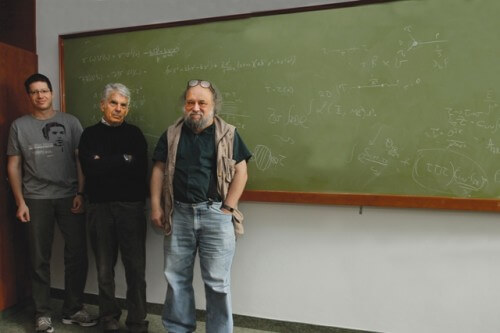Dr. Komargodsky shared the award with the leaders of the Atlas experiment at CERN

The "New Horizons" prize is awarded by the Fundamental Physics Prize Foundation to three promising young physicists. Each of them also wins $100. The leaders of the "Atlas" experiment, one of the two experiments on the LHC particle accelerator at CERN, in which the "Higgs boson" was apparently discovered, won - along with their colleagues from the CMS experiment - half of a special prize, awarded by the same organization in the field of basic physics (the in a grant of three million dollars). A number of scientists from the Weizmann Institute of Science, the Technion and Tel Aviv University work at "Atlas". Last year, a graduate of the Weizmann Institute of Science, Prof. Nathan (Nathi) Zeiberg, from the Institute for Advanced Studies in Princeton, won the prize for basic physics.
Dr. Komargodsky completed his doctoral studies in physics at the Weizmann Institute of Science four years ago. After doing post-doctoral research at the Institute for Advanced Studies in Princeton, he returned and joined the Institute's Department of Particle Physics and Astrophysics as a senior researcher. His research, which focuses on quantum theory, sheds new light on a number of related fields. One of his outstanding achievements was described in an article he published together with Prof. Adam Schwimmer from the Weizmann Institute of Science in 2011, which proved a basic hypothesis regarding the properties of quantum field theories (the theories that describe the behavior of the elementary particles in nature), in four-dimensional space-time.
This is a hypothesis that was first coined by the English physicist John Cardy in 1988. According to this hypothesis, there is a certain inequality, which is responsible for the phenomena in which systems with known "rules of the game", in which many factors participate, reach situations that cannot be explained using the rules and the players alone . For example, the behavior of stocks and indices on the stock exchange, or traffic congestion, or the weather. This is an inequality between the amount of degrees of freedom that exist at very short distances (such as those that can exist between the new tiny particles that may be discovered in experiments at the LHC particle accelerator), and the amount of degrees of freedom at larger distances (such as those that exist between the particles of matter we know today).
If Cardi's hypothesis is correct, because then it may be possible to explain with it, how from a system in which particles much smaller than protons and neutrons operate, at tiny distances and at very high energies, as the system cools, the standard model is obtained, which is the well-known, recognized and accepted physical theory. In other words, if the hypothesis is correct, we will be able to explain and understand how from the very complicated world of the tiny subatomic particles, and from the enormous energies that work between them, the world we know developed and was created.
A conversation on the beach
About two years before Cardi presented his hypothesis, in 1986, the physicist Alexander Zamolodchikov was able to prove that inequality between the degrees of freedom at short and long distances exists in two-dimensional systems (having one dimension of space and one dimension of time). Some believe that Zamolodchikov's work spurred Cardi to present his hypothesis of a similar inequality that exists in four-dimensional systems (three dimensions of space and one dimension of time). But the question of whether the hypothesis stands the test of reality remained open, until one evening, on the shore of an island in the Aegean Sea, Prof. Adam Schwimmer and Dr. Zohar Komargodsky talked. The two tried, for several years, to find a way to prove Cardi's hypothesis and turn it into a full-fledged theorem. They shared their ideas from time to time, and among them were several possible courses of action, none of which matured into actual proof. That afternoon, on the shore of an island in the Aegean Sea, during a break between lectures at a scientific conference held there, the two sat, facing the sun slowly descending into the blue water, and talked about the old problem. And suddenly, the solution emerged and floated: although none of the ways tried on the way to the solution produced the long-awaited proof, but a certain combination of four or five beginnings, created the framework on which the proof was based.
For the Fundamental Physics Prize announcement: http://www.fundamentalphysicsprize.org/
More information - and photos - can be obtained from the office of the spokesperson of the Weizmann Institute of Science 08-934-3856

One response
What does his honor have to say about breaking the speed of light at the LHC except for a loose cable